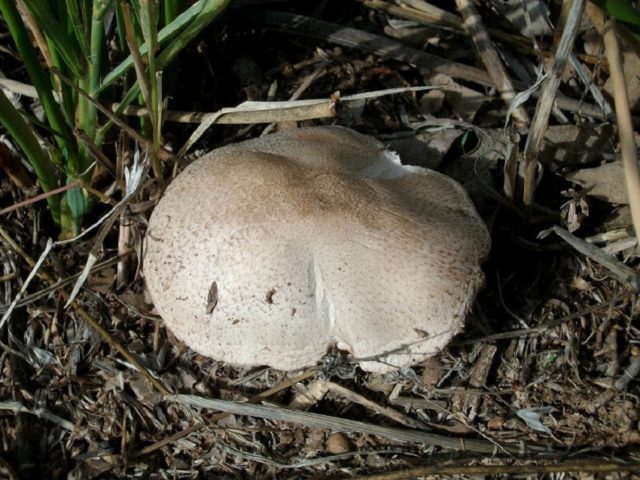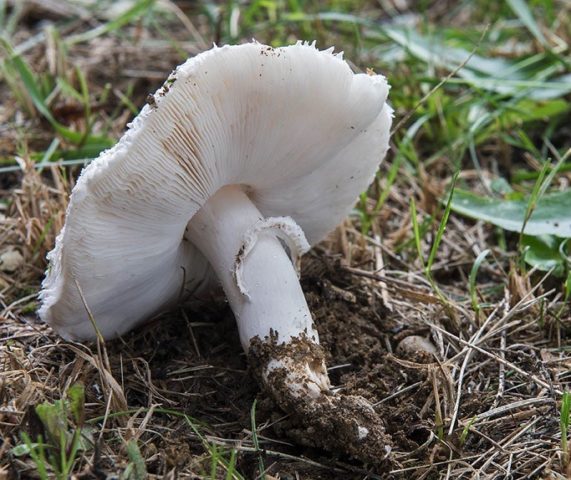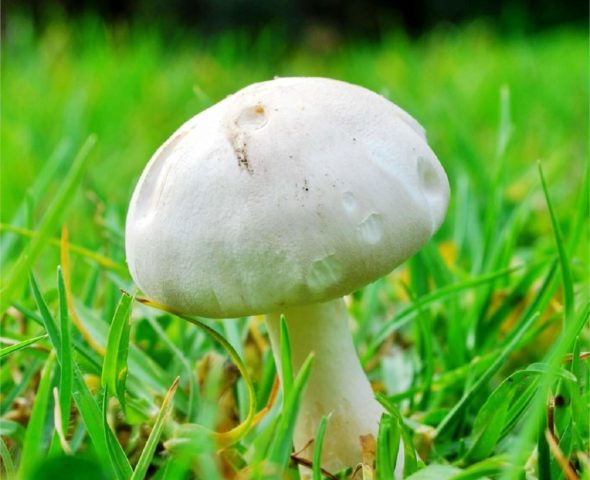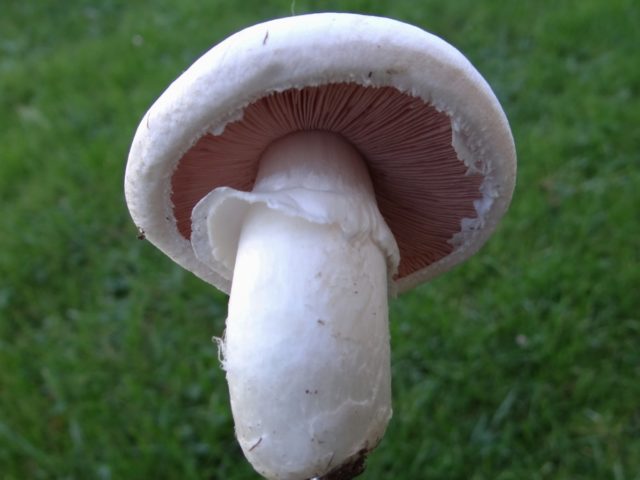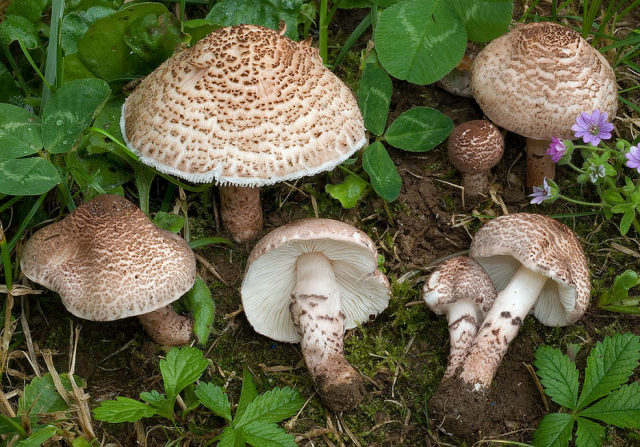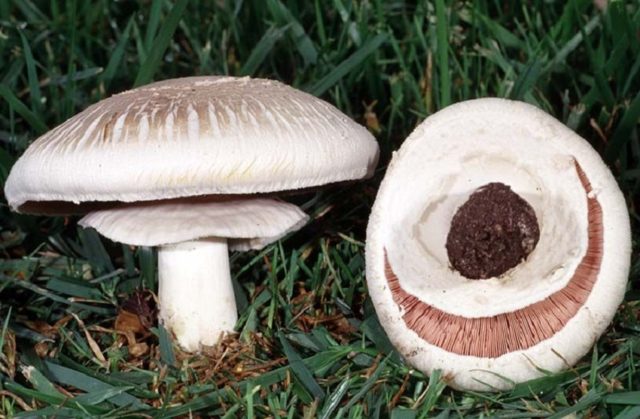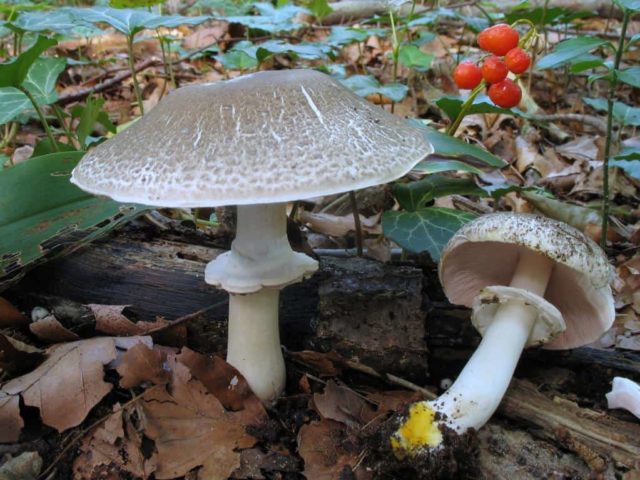Content
Among the mushroom family, there are different representatives. Belochampignon long-rooted is very familiar to mushroom pickers who prefer this kind. The popularity is deserved, thanks to the taste characteristics, which are considered the main parameters of any mushroom.
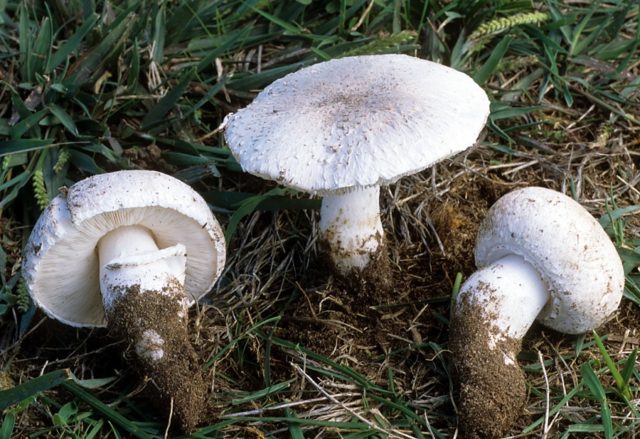
Knowledge of the external characteristics of the fruiting body is the key to maintaining health
Where the long-rooted white champignon grows
Belochampignon is widespread in North America, Australia, Eurasian countries. Fans of "quiet hunting" from Russia can meet a juicy mushroom in the Rostov region. In other regions, its presence was not noted. Most often grows in fields, roadsides, parks or gardens. The species can grow as single specimens or in small groups.
Fruiting lasts from early June to early October.
What does long-root beetle mushroom look like?
You can easily recognize the species among other representatives of the mushroom kingdom by its description. The main parts of the fruiting body have their own characteristic features:
- Hat. In young specimens, it is spherical. Adults are distinguished by a hemispherical or convex-outstretched cap. On some, there is a small tubercle in the middle. The surface is scaly or fleecy, whitish in color, with a darker center. Diameter from 4 cm to 13 cm.
- Pulp. Under the skin it has a grayish tint, the main part is white. The consistency is dense, the smell of mushroom and strong enough. The taste is slightly sweet, the smell resembles the aroma of walnut kernels.
- Plates. The long-rooted species is attributed by scientists to lamellar mushrooms. Its plates are frequent, thin, cream-colored, and darken when damaged. If they dry out, they turn brown.
- Leg. Tall and strong. Length from 4 cm to 12 cm, thickness up to 2.5 cm. It resembles a mace in shape. The base of the leg has long underground formations that grow into the ground. Decorated with a simple white ring. Moreover, it can be located in any part - at the bottom, in the middle or at the top of the leg. Some white mushrooms do not have it at all.
The leg can have a ring or its remnants at any distance from the cap
The spores of the species are oval or elliptical, white or cream colored.
A detailed description allows mushroom pickers to immediately distinguish the long-rooted white champignon from other species.
Is it possible to eat long-rooted champignon
The mushroom is considered edible even when fresh. There are no prohibitions or restrictions for eating. Therefore, you can start cooking after cleaning and quickly boiling the fruit bodies.
False doubles
It should be noted that an inexperienced mushroom picker can confuse a long-rooted mushroom with both other edible mushroom species and poisonous counterparts.
Among the edible species that share similar characteristics, it should be noted:
- Belochampignon ruddy. Latin name Leucoagaricus leucothites. Has a more extensive distribution area than long-rooted. Fruiting ends in August, so when picking mushrooms in the fall, you will not be able to confuse the species.
Belochampignon ruddy is found only in the summer months
- Champignon double-peeled... In Latin it sounds like Agáricus bísporus. There are three varieties of the mushroom - white, cream and brown. The first two are very similar to the long-rooted white champignon.
Dvorporovy - edible species that can be harvested with long-rooted
These species are also edible. If they fall into the basket, they will not do any harm. However, there are poisonous scaly counterparts to be wary of:
- Scaly lepiota (Lepiota brunneoincarnata). The differences are in the size of the cap. In a lepiota, it is no more than 6 cm in diameter. Also, the leg of a poisonous mushroom has a different color to the place of attachment of the ring and below it. It is darker at the bottom.
Lepiota is best distinguished by adult specimens, in which the maximum diameter of the cap is much smaller.
- Yellow-skinned champignon (Agaricus xanthodermus). The cap is large, like the long-rooted species. The skin color is yellow; when pressed, the cap also becomes yellowish. The leg is hollow. The mushroom is very poisonous.
This look has a hollow cap, which distinguishes it from the edible champignon.
- Motley champignon (Agaricus moelleri). The color of the cap is gray; you need to carefully examine it when picking mushrooms. Diameter up to 14 cm. Brown spores.
The variegated one has a leg that does not have the shape of a mace
- Mushroom flat-lipped (Agaricus placomyces). Has an inky smell and turns yellow in air. The diameter of the cap is no more than 8 cm. The spore powder is brown.
Flatloop has a distinct odor that resembles phenol.
Collection rules and use
At the time of the "quiet hunt" you need to carefully examine each copy before collecting it in the basket. It is not recommended to take fruit bodies on the side of roads, near railways, near industrial areas. Any mushroom that is in doubt should be set aside. For more information on how to inspect fruiting bodies during harvest:
The species is suitable for fresh consumption, drying, frying, pickling and salting. It is very convenient for culinary specialists that it can be consumed even without boiling.
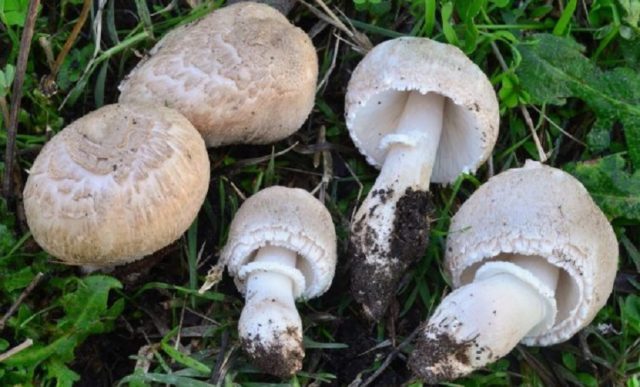
Silent hunting only makes sense away from roads or other sources of toxins
Conclusion
Long-rooted white champignon is a very tasty and juicy mushroom. Collecting edible mushrooms will significantly diversify the diet and increase the vitamin content of dishes.
